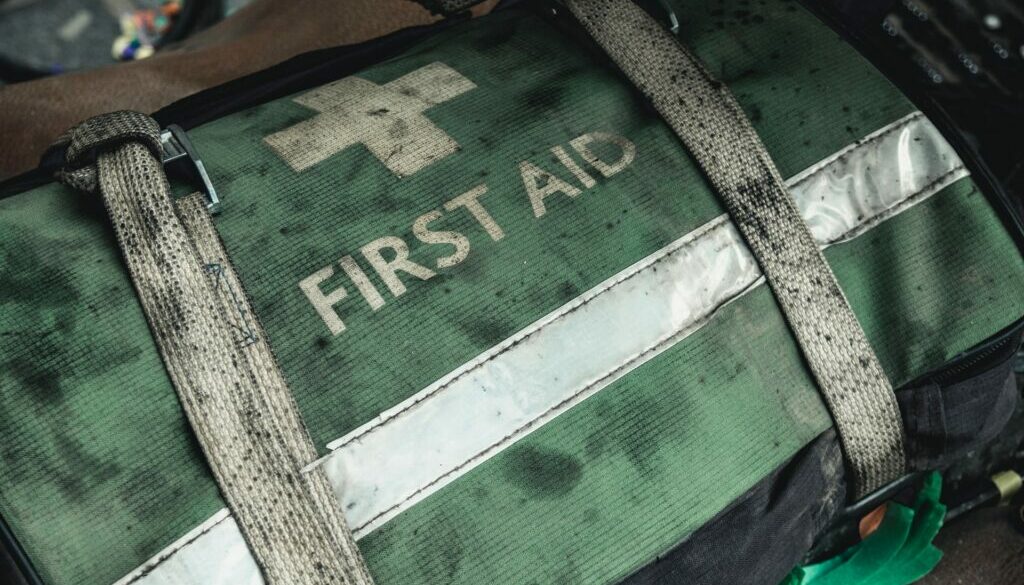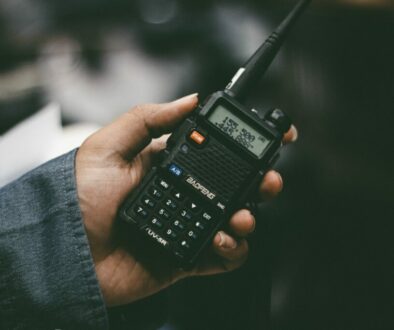Best Tourniquet Buying Guide

Please note: This article contains opinions on tourniquets. These are strictly our opinions. This content is for informational purposes only. You should decide what works best for you, and you should get professional training from a medical expert on using tourniquets if you choose to use one. Nothing included in this article is to be deemed medical advice. Seek professional medical and/or first aid training.
Tourniquets are a vitally important life-saving medical tool for potentially deadly situations where a wound to an extremity is bleeding freely. They are a vital piece of first aid equipment for anyone who may find themselves in a situation where they need to stop arterial blood loss or other extreme bleeding quickly and effectively, especially where help will not arrive quickly.
Tourniquets can be used in various situations, from medical emergencies to climbing accidents. Their purpose is to prevent blood loss and hypovolemic shock until the person can receive medical care.
Tourniquets can be dangerous, especially when used incorrectly. A trained medical professional should have the expertise necessary to minimize damage. However, in a life-or-death situation where help may take too long to reach you, it may be worth the risk in order to keep the injured person alive long enough for medical treatment.
There are many different types of tourniquets on the market, so choosing the right one is important. This post is about a tourniquet everything you may wish to consider before buying one. So, let’s dig in!
What is a Tourniquet?
A tourniquet is a device used to control bleeding by compressing a limb or extremity. Tourniquets (not to be confused with pressure dressing bands, which are not supposed to cut off circulations) are usually applied when severe bleeding cannot be controlled with direct pressure or other methods, such as hand pressure. They come in two forms: closed-loop system or open-loop tourniquet.
There are methods for creating a DIY windlass tourniquet by tying material tightly, then using a stick or other object to tighten. (Check with your preferred and trusted first-aid source to learn more about creating a tourniquet on the fly in an emergency, as there are things you’ll want to be aware of to minimize damage.) Commercial tourniquets simplify the procedure, and we’re going to dive deeper into how to choose a good one to have on hand.
Parts of a Tourniquet
Modern tourniquets consist of the following parts: strap, windlass, C-clip, and time tag. Knowing what these parts are and do is important if you ever need to use one.
Strap
The strap is used to tighten the tourniquet around the limb. The strap can be made from various materials, including cloth, leather, or metal. It needs to be sturdy enough to both tighten around the limb and withstand the pressure of the windlass during casualty evacuation.
Windlass
The windlass is attached to the strap and is used to tighten the tourniquet. The durable windlass system-backed tourniquet gives you a mechanical advantage, making it easier to tighten the tourniquet.
C-Clip
The C-clip is used to secure the windlass in place. The C-clip is a metal clip that quickly locks the tourniquet into place, preventing it from loosening and allowing bleeding to continue.
Time Tag
The time tag is used to mark the time of the tourniquet application. The time tag is an important step, as it allows medical professionals to know how long the tourniquet has been in place. A tourniquet left on too long can become life-threatening in and of itself.
If the tourniquet does not include a time tag, you can also write the time it was applied on the person’s body in a spot where it can’t be missed (such as on their forehead). However, because a time tag is affixed to the tourniquet itself, it can make it much more intuitive for emergency medical responders to notice and react accordingly.
Are Tourniquets Dangerous?
Are tourniquets dangerous? That’s a complicated question to answer. In short, yes; there are risks inherent to using a tourniquet. However, tourniquets are used when a person’s life is already at risk because of a terrible wound, crushed limb, or other injury causing major blood loss.
Tourniquets are only for emergency use. Associated risks include the potential for nerve damage, decreased circulation, tissue damage, and more. Risks increase the longer a tourniquet is left on, with many sources citing irreversible damage becoming highly likely around the 2-hour mark.
If you’re considering using a tourniquet during an emergency situation, it’s important to weigh the risks and benefits carefully. In most cases, the benefits of using a tourniquet far outweigh the risks. However, if possible, you should always consult with a medical professional before using one. Emergency responders can advise you on the necessity and procedure for applying the tourniquet.
Prerequisites for Buying a Tourniquet
Since a good tourniquet can play a crucial role in saving one’s life, you simply can’t compromise with the quality part of the product. Unfortunately, with plenty of options floating on the market, it turns out it’s actually quite daunting to pick out the best tourniquets.
Here are some things to keep in mind when choosing a tourniquet:
Size
The size of the tourniquet should be appropriate for the person using it. If it is too small, it will not be effective; if it is too large, it may be difficult to apply properly.
Fabric
The type of fabric the tourniquet is made from is also important. Some materials, such as nylon, can cause skin irritation. Since tourniquets are an important part of casualty care, they should be of good quality.
Ease of Use
The tourniquet should be easy to apply and remove. If it is too difficult to use, it may not be effective in an emergency situation.
Top Best Tourniquets on the Market
Let me be honest: the market is overloaded with multiple Tactical Medical Solutions brands claiming they provide 100% excellent, affordable, easy-to-use, and original tourniquets. But this is not all true. Though you are likely searching for a tourniquet as a first-aid device to have on hand during adventures to remote places, you may want to look for tourniquets that meet American defense standards. Because the military uses these for tactical combat casualty care, they have vetted them and balanced effectiveness and cost. Therefore, tourniquets rated for tactical combat casualty care will likely be a good choice for any application.
Here is a list of top leading tourniquet brands:
- The CAT Tourniquet:
The CAT (Combat Application Tourniquet) is a military-grade tourniquet that the U.S. Army has used since 2005. It is made from high-strength nylon and features a one-handed application system that makes it easy to use in an emergency. The CAT tourniquets are also available in a smaller size for children and pets.
- The SOF Tactical Tourniquet or Softt Tourniquets:
Known for its iron-glad guarantee and sturdy fabric, SOFTT-W 1.5 Tourniquet is one of the best tourniquets in the USA. The SOF (Special Operations Forces) Tactical Tourniquet (softt tourniquets) is a heavy-duty tourniquet used by the U.S. military and special forces units worldwide. It is made from durable materials and features a quick-release system that makes it easy to remove in an emergency as compared to other tourniquets.
There is also a Red Cross version of this tourniquet.
- The SAM Medical X1 Tourniquet:
The SAM (Stretch, Apply, and Move) Medical X1 Tourniquet is one of the most common tourniquets. They are lightweight tourniquets that can be easily carried in a pocket or bag. It is made from high-strength nylon and features a one-handed application system that makes it easy to use in an emergency situation. This is especially useful if you are adventuring solo, as it can be adequately tightened with only one hand.
Types of Tourniquets
There are many different types of tourniquets, each with its own advantages and disadvantages. Some of the most common include:
- Elastic bands:
These are perhaps the simplest, most inexpensive tourniquets. However, they may not be as effective as other types at stopping bleeding.
- Ratchet straps:
These are commonly used in industrial settings but can also be purchased for use as a tourniquet. The ratcheting system is very effective at stopping the bleeding, but can be difficult to apply correctly without assistance.
- Commercial tourniquets:
Official tourniquets are specifically designed for use as tourniquets and are often used by first responders and in the military. They are usually the most effective type of elastic band tourniquet but can also be the most expensive. These are available in most pharmacies and medical supply stores. Elastic tourniquets are typically made of latex rubber or nylon and have a plastic or metal buckle.
- Improvised tourniquets:
These can be made from anything that can create pressure to stop the bleeding, such as a belt, rope, scarf, tie, or piece of clothing. You can research ways to create a DIY tourniquet in order to be prepared in situations where they may not be one on hand.
No matter which type of quality tourniquet you use, it is important to follow the instructions carefully to ensure that it is applied correctly. Medical assistance is always crucial with this type of first aid, but is even more important if you are unsure how to use the tourniquet properly.
- Junctional Tourniquet:
Junctional tourniquets are devices that are used to control bleeding at junctions between the limbs and the body. These devices can be applied externally or internally and are often used in emergency situations where uncontrolled bleeding could lead to death. These are typically made of elastic material that can be tightened or loosened as needed, and they may also be equipped with a release mechanism to allow for easy removal when no longer needed. While these (and other types of tourniquets) are not intended for long-term use, they create pressure needed to stop acute bleeding can be a life-saving tool in emergency situations.
Benefits of Tourniquets
Most people are familiar with tourniquets from movies or T.V. shows, where they are often used as a last-ditch effort to stop someone from bleeding out. But, in reality, tourniquets are an important tool for first responders and medical professionals and can be the difference between life and death in an emergency. Here are just a few of the benefits of tourniquets:
- Tourniquets are a simple but effective medical device for quickly and effectively stopping major blood loss.
- They are easier to use than many other medical interventions, even in high-stress situations.
- Tourniquets can be applied to any limb, making them versatile in various situations.
- They are portable and can be easily carried with you in case of an emergency, especially if you will be out of .
- Good tourniquets are relatively inexpensive, making them a cost-effective tool for first responders and medical professionals.
Quality tourniquets can save lives in a variety of emergency situations, making them an important tool for first responders and medical professionals. If you or someone you know is ever in a situation where major arterial blood loss is occurring, they can be a life-saver.
Tips for How to Use a Tourniquet
A tourniquet is a device that can be used to stop blood flow of blood from an injury quickly. Tourniquets are most commonly used on limbs, but can also be used on other parts of the body.
Tourniquets work by applying pressure to an artery to restrict blood flow. Unfortunately, this pressure cuts off the blood supply to the limb or other body area, which can cause the tissue to die. While this is dangerous, remember that tourniquets are generally only used if direct pressure and other methods of stopping blood loss aren’t working. They are a life-saving tool, especially when used correctly.
Tourniquets are typically only used in emergencies, as they can cause permanent damage if used for too long. It is important to follow the instructions carefully when using a tourniquet, as improper use can lead to further injury.
Please take the time to research proper methods for using a tourniquet. Resources such as this handout from the Department of Homeland Security and the instructions for the Red Cross version of the SOF Tourniquet can help make the process clearer with visuals and more. You’ll also want to research the specific tourniquet you plan on carrying and familiarize yourself with those directions.
However, there are some general tips for using a tourniquet. The following is not meant as medical advice, and you should always defer to the direction you receive from medical professionals.
- First, attempt direct pressure to the wound with gauze or another material. If the bleeding does not slow and the material is soaking through, you may need to move on to tourniquet use.
- Place the tourniquet around the limb or other body area above the wound (between the wound and the heart). The tourniquet should be placed “at least 2 to 3 inches from the wound,” according to DHS. Don’t put the tourniquet around a joint, such as an elbow or knee.
- Tie the tourniquet tightly, according to the directions for your specific type of tourniquet.
- Once the tourniquet is in place, do not remove it until medical help arrives.
- If the bleeding is not stopping, you may want to tighten the tourniquet or apply a second above the first.
- Warn the person that you are apply a tourniquet, and that it may hurt. Let them know why are you applying the tourniquet and that it is being done to help them.
Tourniquets are a valuable tool that can save lives in emergency situations. When used correctly, they can help to prevent further injury and even death. Although tourniquets can save lives, they should only be used as a last resort. If possible, direct pressure or other methods should be used to control bleeding first.
Improper use of tourniquets can cause tissue damage, so it is important to follow proper procedures. However, remember that you are applying it in order to stop dangerous bleeding, so focus on stopping the bleeding. Public health education movements in the United States have actually focused on helping people know when and how to use tourniquets so that they are not too hesitant to jump in and use one when necessary.
If you find yourself in a situation where a tourniquet might be required, call emergency services for help immediately if that’s possible. Even if you already know how to use a tourniquet, they can walk you through the process and help you make better judgements based on when help will arrive.
Common Tourniquet Myths
Tourniquets have been used for centuries to stop bleeding, but there are still many myths and misconceptions about their use. Here are some of the most common myths:
- Tourniquets should only be used on lower extremities.
Tourniquets can be used on arm and leg injuries alike. They cannot be used for injuries to the torso, neck, or head.
- Tourniquets are dangerous and should be avoided at any cost.
Tourniquets are safe and effective emergency supplies when used properly. Being hesitant to use a tourniquet for fear of damaging a limb can result in life-threatening blood loss continuing to occur.
However, tourniquets should only be used when necessary. They should also be removed by a medical professional as soon as possible once the bleeding has stopped. Though it was previously advised, medical professionals now advise against loosening and re-tightening the tourniquet; being in touch with an emergency responder can help with issues and questions that arise during first aid.
Combat Application Tourniquet (C-A-T): Frequent Top Choice for the #1 Most Reliable Tourniquet
One of the most popular choices is the is the CAT Tourniquet. This life-saving device is the United States Army’s choice for their own soldiers who suffer traumatic wounds with significant bleeding. Because of their use in combat situations, they have been used, studied, and vetted thoroughly.
The U S Army Institute of Surgery researched this specific design and found that it is 100% effective in occluding blood flow to an extremity. It’s designed specifically to be easy to use under duress, without any pieces that require fine motor skills to operate, which can be hard in case of stress or injury to self. Plus, it is made of quality materials with enough capabilities to pass survival stress. Its portable size means that it can easily fit in an emergency aid kit.
C-A-T® Features:
- One-handed application design
- Windlass system designed to provide pressure all around the extremity
- Fast to use so that you can help stop bleeding quickly
- Locks into place after application
- Designed to reduce tissue damage
- Reversible for left or right-handed operators
- Marked with Red Tip Technology that helps make application more intuitive
Instructions for Use
Please refer to the North American Rescue website for video demonstrations, written instructions, and other resources that can make the difference between effective and ineffective tourniquet use.
Another reason these tourniquets are a top choice is that they are designed to be used either one-handed or two-handed. Their video instructions demonstrate how to use the product on yourself with one hand, as well as on someone else with two hands. Video demonstrations of the specific product you could be using are very helpful, perhaps second only to in-person training. Tourniquets can be deceptively simple, and you want to make sure you’re familiar with the right way to use and secure the design to stop blood flow most effectively and minimize other damage.
Why North American Rescue (NAR)
One of the leading and best tourniquet manufacturers, North American Rescue is a most popular and renowned name in the defense industry for its military-style, advanced yet super affordable tourniquet supplies that can easily fit in your emergency aid kit. The brand provides a complete array of medical products to military, civilian law enforcement, federal agencies, and civilian critical medical personnel designed to meet the ever-evolving threats of the 21st century. To further set minds at ease, North American Rescue is a fully licensed bonded and the insured entity for the purchase of medical supplies.
To know more about NAR tourniquet reviews, please connect here.



